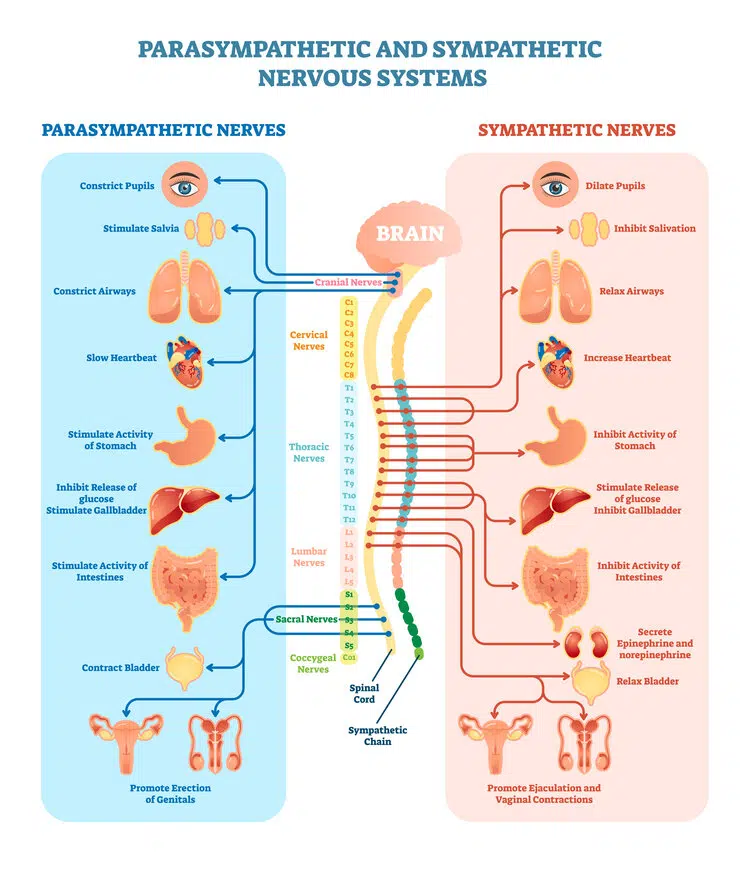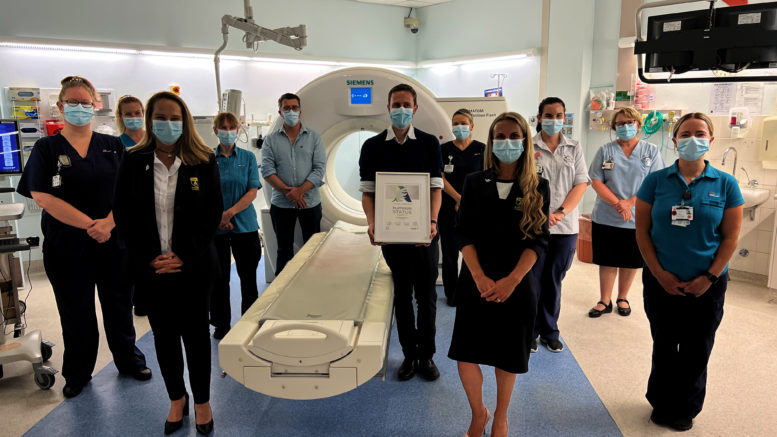You can't extrapolate this to the vagus nerve stimulation for stroke recovery. That would be practicing medicine without a license. Unless your doctor creates these protocols for you.
vagus nerve (56 posts to July 2012)
10 Easy Ways to Stimulate Your Vagus Nerve to Reduce Stress from Debbie Hampton
What Is the Vagus Nerve
The vagus nerve is the longest of the cranial nerves in your body. It runs through your belly, diaphragm, lungs, throat, inner ear, and facial muscles. Practices that stimulate or relax these areas of the body can influence the tone of your vagus nerve. It is the body’s major parasympathetic nerve responsible for basic functions, like the gag reflex, slowing the heart rate, controlling sweating, regulating blood pressure, stimulating digestion, and determining vascular tone.
There are twelve cranial nerves in the human body. They come in pairs and link the brain with other areas of the body and some send sensory information, like smells, sights, and tastes. Some cranial nerves control motor functions, including the movement of muscles and the operation of certain glands. Some cranial nerves have either sensory or motor functions, while others have both. The vagus nerve has both.
Vagus nerve anatomy and function
The sensory functions of the Vagus nerve are divided into two types:
- Somatic components – sensations felt on the skin or in the muscles, and
- Visceral components – sensations felt in the organs of the body.
Sensory functions of the Vagus nerve include:
- Providing somatic sensation information for the skin behind the ear, the external part of the ear canal, and certain parts of the throat.
- Supplying visceral sensation information for the larynx, esophagus, lungs, trachea, heart, and most of the digestive tract.
- Playing a small role in the sensation of taste near the root of the tongue.
Motor functions of the Vagus nerve include stimulating:
- muscles in the pharynx, larynx, and the soft palate;
- muscles in the heart, where it helps to lower resting heart rate;
- involuntary contractions in the digestive tract, including the esophagus, stomach, and most of the intestines.
The Vagus Nerve’s Role in Stress
During periods of chronic stress, your body stays in a heightened state, with stress hormones, adrenalin and cortisol, pumping through your body. A regular overabundance of these hormones can cause damage all over your body — especially your brain. Over time, chronic stress can cause a multitude of mental and physical health problems, such as chronic pain, anxiety, mood swings, gut and brain inflammation, autoimmune disorders, and more.
The vagus nerve and the parasympathetic nervous system can come to your rescue in times of stress. Stimulating the vagus nerve initiates the calming, relaxation response of your parasympathetic nervous system. And it turns down your sympathetic nervous system’s fight-or-flight stress response.
Because it is the main cranial nerve that connects the brain and body, the vagus nerve is a vital part of how your body and brain communicate and function together. Without it, your body would not be able to perform basic tasks. And by stimulating it, you can receive powerful health benefits.
Here’s How to DIY Vagus Nerve Stimulation
By stimulating your vagus nerve, you can send the message to your body to relax and reduce stress. Learning to calm your brain and body has many mental and physical health benefits which can lead to long-term improvements in mental health, mood, and resilience.
1. Cold Exposure
Acute cold exposure has been shown to activate the vagus nerve and cholinergic neurons, capable of producing, altering, and/or releasing acetylcholine. Acetylcholine is the main neurotransmitter of your calming parasympathetic nervous system. Researchers found that exposing yourself to cold on a regular basis can turn down your sympathetic nervous system and the stress response while increasing the activity of the parasympathetic nervous system through vagus nerve stimulation.
You can accomplish this easily way by taking cold showers. If the idea of a cold shower doesn’t appeal to you, you can simply splash your face with ice-cold water or try finishing your next shower with a few minutes of cold water.
2. Deep and Slow Breathing
Slow relaxed breathing has been shown to reduce anxiety and increase the parasympathetic system by activating the vagus nerve. Usually, most people take about 10-14 breaths per minute. Slowing down your breathing to around six breaths a minute activates your vagus nerve and engages the parasympathetic nervous system.
Your breathing is usually managed subconsciously – most of the time – but at any moment, you can take control and change how you breathe which immediately alters your emotions and nervous system. Therefore, slow, deep breathing is the fastest way to calm down and reduce anxiety on the spot.
3. Singing, Humming, Chanting, and Gargling
Your vocal cords and the muscles at the back of your throat and the pallet of your mouth are directly connected to the vagus nerve. Therefore, singing, humming, chanting, and gargling activate these muscles and stimulate the nerve. Humming, mantra chanting, hymn singing, and upbeat energetic singing are similar to initiating a vagal pump sending out relaxing waves.
4. Probiotics
In research, it has become increasingly clear that gut bacteria improve brain function by affecting the vagus nerve. In one study, animals were given the probiotic, Lactobacillus Rhamnosus, and researchers found positive changes to the GABA receptors in the brain, a reduction in stress hormones, and decreased depression and anxiety-like behavior.
5. Meditation
Research shows that meditation increases vagal tone, which is the activity of the vagus nerve and positive emotions and promotes good feelings towards yourself. Another study found that meditation reduces sympathetic fight-or-flight activity and increases vagal modulation. Meditation improves your brain in many ways.
6. Omega-3 Fatty Acids
Omega-3 fatty acids are essential fats that your body cannot produce itself and they are essential for the normal electrical functioning of your brain and nervous system. Fish are a primary source. Omega-3s are critical for brain and mental health and affect many aspects of wellness. Supplementing with Omega-3s has proven to help people overcome addiction, repair a ‘leaky brain’, and even reverse cognitive decline.
Researchers have also discovered that omega-3 fatty acids increase vagal tone and activity. Studies show that they reduce heart rate and increase heart rate variability, which is the time and consistency between heartbeats. They most likely do this by stimulating the vagus nerve.
7. Exercise
Exercise helps your brain in so many ways. Research shows that physical exercise improves memory and thinking skills, mood and creativity, and learning while reducing depression, age-related decline, and the risk of dementia and Alzheimer’s. Some research has also shown that it stimulates the vagus nerve, which may be partially responsible for some of the positive brain and mental health effects. Many brain health experts recommend exercise as the best thing a person can do to improve brain health.
8. Massage
Research shows that massage stimulates the vagus nerve and increases vagal activity and tone. The vagus nerve can be stimulated by massaging specific areas of the body. For example, foot or hand massages (reflexology) have been shown to increase vagal modulation and heart rate variability while decreasing the stress response. Carotid sinus massage, a technique involving digital pressure on the richly innervated carotid sinus, an area located near the right side of your throat, can stimulate the vagus nerve to reduce seizures.
9. Socializing and Laughing
Socializing and laughing can reduce cortisol levels. These activities are likely doing that by stimulating the vagus nerve. Researchers discovered that even just reflecting on positive social connections improves vagal tone and increases positive emotions. An interesting note is that vagus nerve stimulation often leads to laughter as a side effect, suggesting that they are connected and influence one another.
10. Intermittent Fasting
Guest Author
 Patricia
Faust is a gerontologist specializing in brain aging, brain health, and
brain function. She has a Master’s degree in Gerontological Studies
from Miami University in Oxford Ohio. Patricia is a certified brain
health coach as well as having a certification in Neuroscience and
Wellness. She has been a co-author of various research studies through
the Scripps Gerontology Center at Miami University. Her newsletter, My Boomer Brain, has an international readership, and she is regularly published in local and social media.
Patricia
Faust is a gerontologist specializing in brain aging, brain health, and
brain function. She has a Master’s degree in Gerontological Studies
from Miami University in Oxford Ohio. Patricia is a certified brain
health coach as well as having a certification in Neuroscience and
Wellness. She has been a co-author of various research studies through
the Scripps Gerontology Center at Miami University. Her newsletter, My Boomer Brain, has an international readership, and she is regularly published in local and social media.








